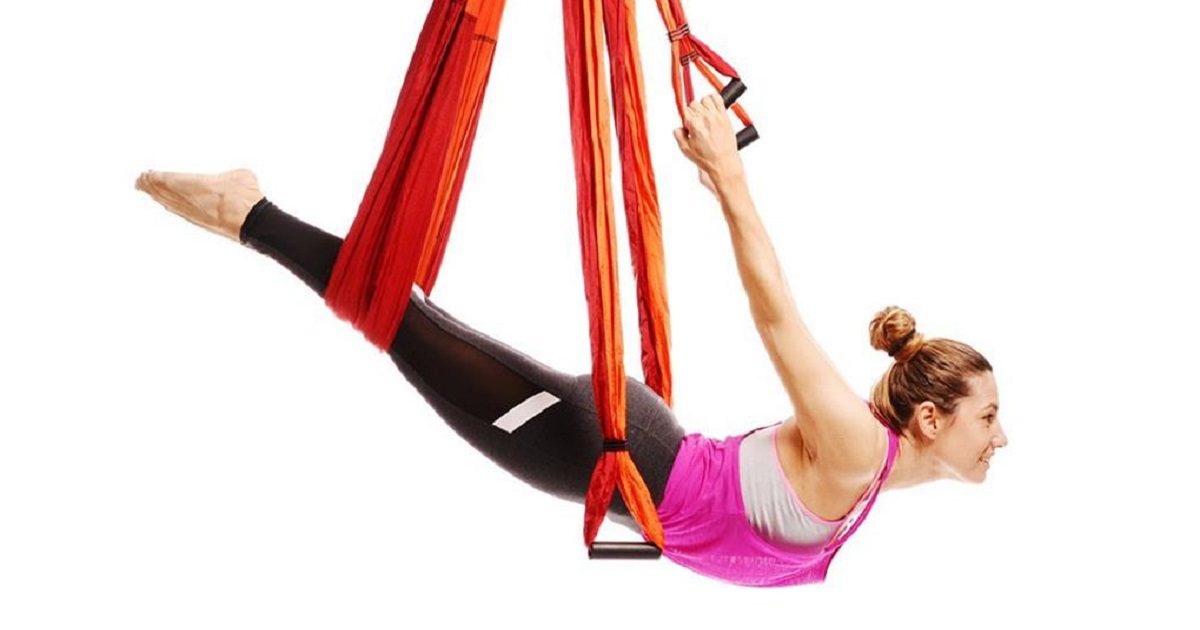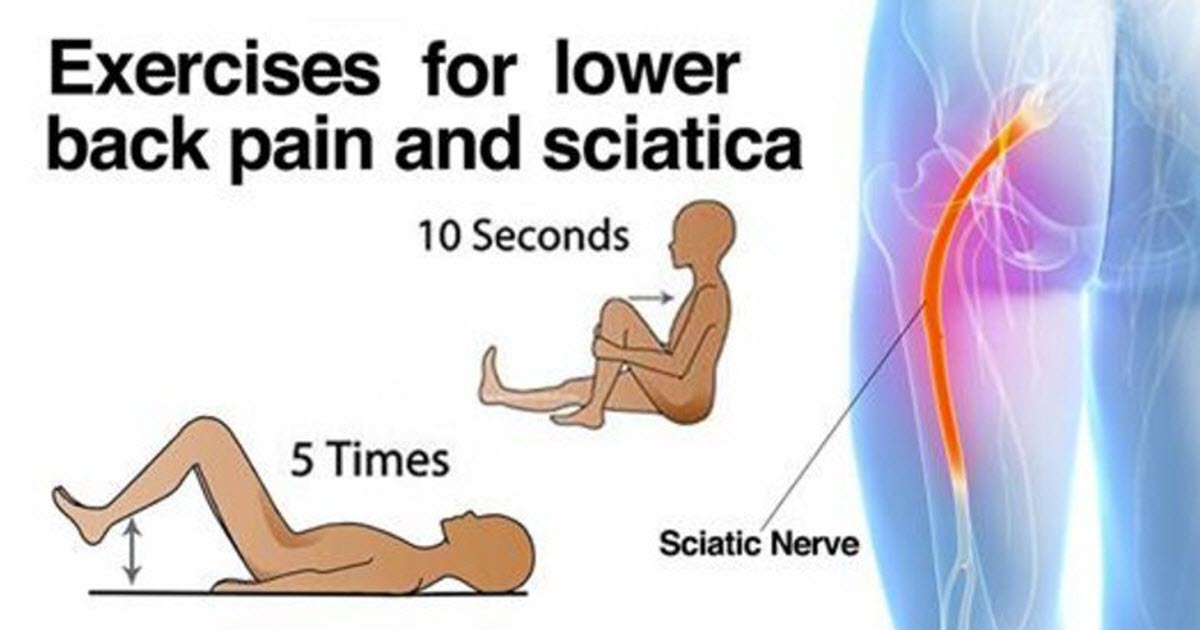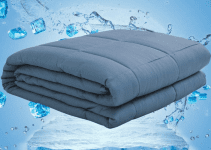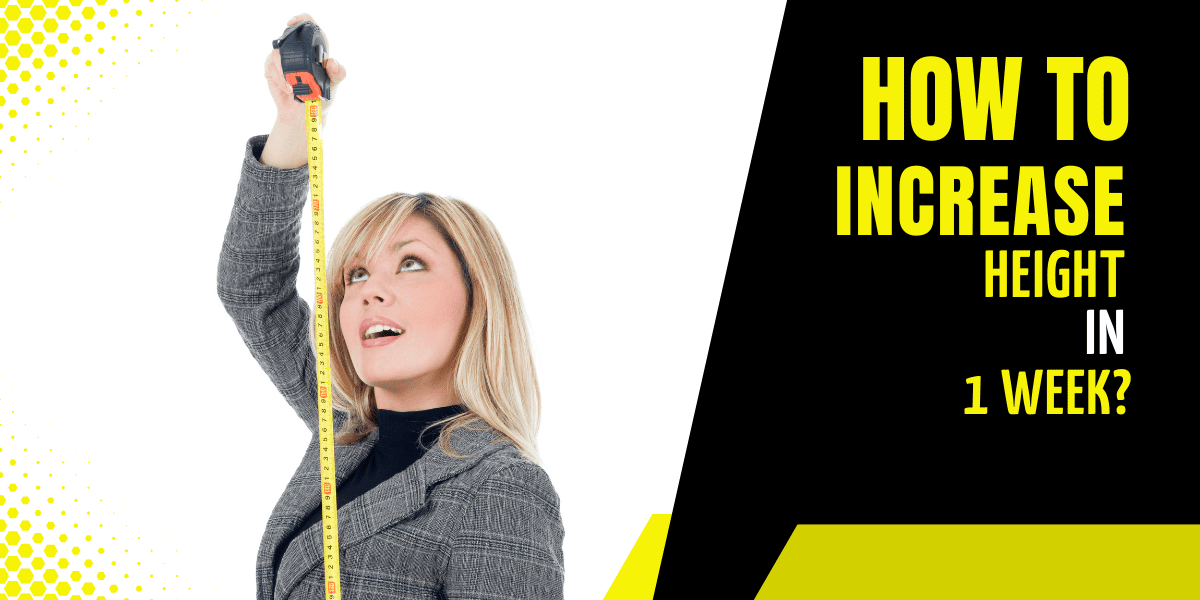When you think about a yoga trapeze, what comes to mind? Most people may imagine the circus and impossible acrobatic feats. But in reality, using the yoga trapeze is more than just performing tricks – it’s useful for strengthening your back as well. So how exactly does one do this on a therapy device like the Yoga Trapeze? And most importantly: Is it effective enough to heal an injured or bad back?
Back pain is a common condition that affects many people. Fortunately, there are natural options for relief that don’t come with major side effects like medication might have. One such option is yoga and this article discusses the benefits of it as well as how you can get started!

What’s A Yoga Trapeze?
Before knowing the benefits, here is a quick glance at what it actually is. The yoga trapeze most closely resembles a swing and can be used as an aid to perform certain postures or exercises that strengthen your core. You can hang off it like a trapeze artist, giving yourself the opportunity of doing some inverted therapy for uplifting results! Inversion Therapy is basically when you’re working out in which your body is upside down at an angle. The goal? To help with things ranging from pain management and improving posture to energizing or just de-stressing.
Traction For Your Spine
Using a yoga trapeze is an effective way to give your spine traction and ease chronic lower back pain. Specifically, this method pulls apart the spine instead of compressing it. This prevents long-term damage caused by constant compression from sitting for prolonged periods of time; this has made back pain such a common ailment today. The opposite happens when using the yoga trapeze as it opens up and lengthens your spine in order to provide feel-good vibes!
One study confirmed that inversion therapy can be an effective way to manage back pain. Individuals who have bad backs or sciatica would typically need surgery but the results show 77 percent of those with inversion therapy did not require surgery compared to the mere 22 percent who only did physiotherapy.
Stretching, Flexion, And Core Strengthening
Have you ever wondered why experts recommend stretching to fix a bad back? Experts recommend stretching to fix a bad back because it extends your soft tissues and muscles, improves range of motion, and cuts down on stiffness. Yoga is the best way to stretch without causing damage or pain.
To help stretch out your spine, try a flexion movement. In this exercise, you bend forward with the goal of widening the distance between each vertebra and easing nerve stress and pain. This move is commonly used in trapeze poses to mimic how flying feels without being attached to a bar above!
Doctors also say that yoga trapeze workouts strengthen your core, another important aspect of easing back pain. As you build upper body strength and a strong core, the strain on your spine will ease. The workout is a win-win for people with chronic or severe back problems!
Lose Weight And Lower Back Load
Aerial yoga helps improve metabolism, decreases body fat percentage and weight. In one study by the American Council for Exercise, subjects went through a six-week program in which researchers found an improvement of multiple parameters: cardiometabolic risk factors (e.g., blood pressure), weight loss, HDL cholesterol levels as well as waist circumference reduction after they had completed their aerial yoga training regimen.
Get Active To Help Your Back
Yoga trapeze classes can make the workout process more fun. Whether you sign up for a group session or work one-on-one with your instructor, you’ll enjoy managing seemingly hard positions and seeing yourself succeed in them over time. Exercise is ultimately important to back pain recovery because it strengthens your muscles for life6 – this works out as well! You may initially struggle but trust us that it gets easier after some effort on your part. It will be worth every second of sweat though – promise!
Feel Refreshed
Studies have found close associations between depression and back pain. This is because being down in the dumps often means that you won’t find the motivation to get moving, which will lead to your bad back getting worse.
Aerial yoga is a great way to combat depression and back pain. Without the downward pressure of gravity, your blood rushes up towards your head which provides you with fresh oxygen that sends energy through your body instead of draining it like traditional types of yoga where there’s more downwards force on the spine. This means feeling revived rather than tired after doing aerial yoga!
Do More Than You Normally Can
Aerial yoga is an amazing way to get a full-body stretch, giving you the option of performing deeper backbends in both directions. Unsurprisingly, regular aerial yogis will tell you that getting into the posture may take some getting used to but once you are there it’s much easier on your body than traditional unassisted asanas because your muscles can relax and remain supported by gravity while holding this pose for extended periods of time.
Before You Begin
Before you start aerial yoga, make sure to consult a medical specialist. Yoga poses on the trapeze may not be compatible with your condition and some users have experienced blurred vision or headaches after inverting their bodies. If you have heart disease, glaucoma, or high blood pressure this type of exercise regimen isn’t for you.
Before trying it alone, you should consider testing the waters at a yoga center that offers trapeze workout classes. A trained instructor will help ease you into this activity with guidance and regulation so injury is less likely to occur. If your love for being on the trapeze grows stronger then investing in one may be an option if they offer them as part of their services or through another provider.
If you know someone who might like this, please click “Share”!


